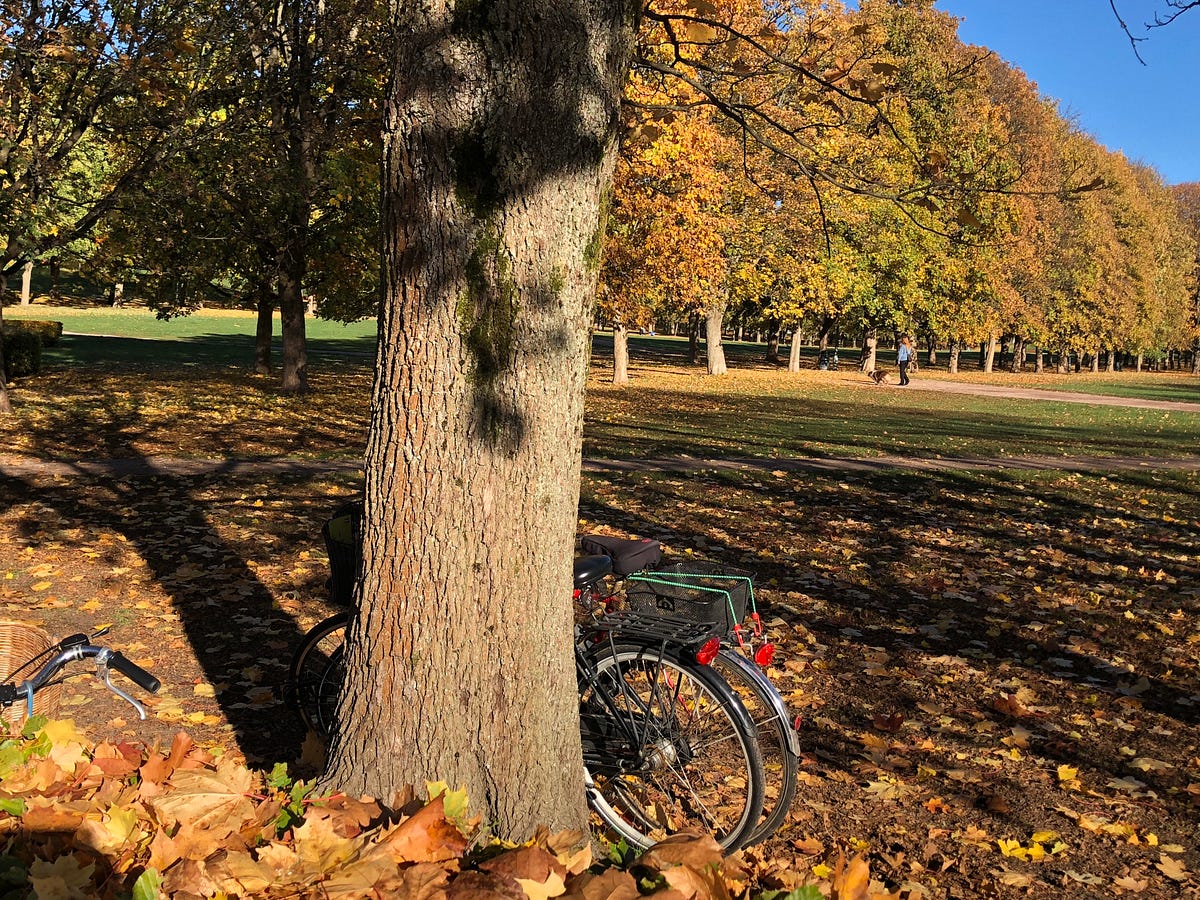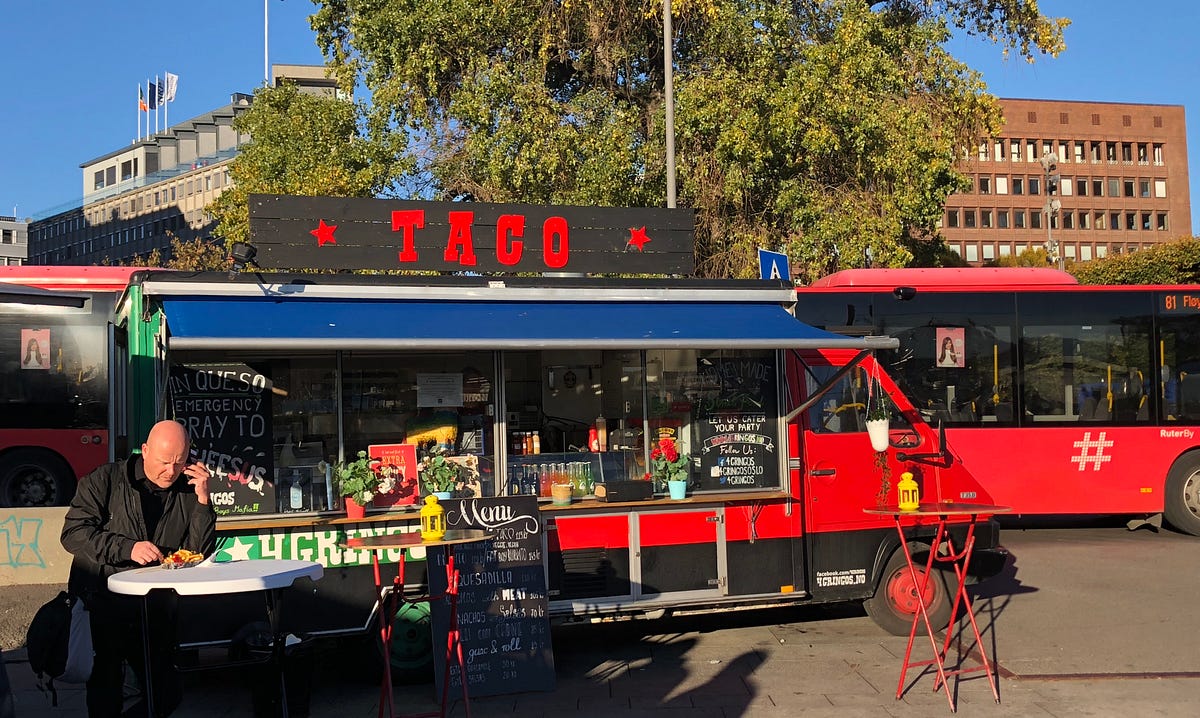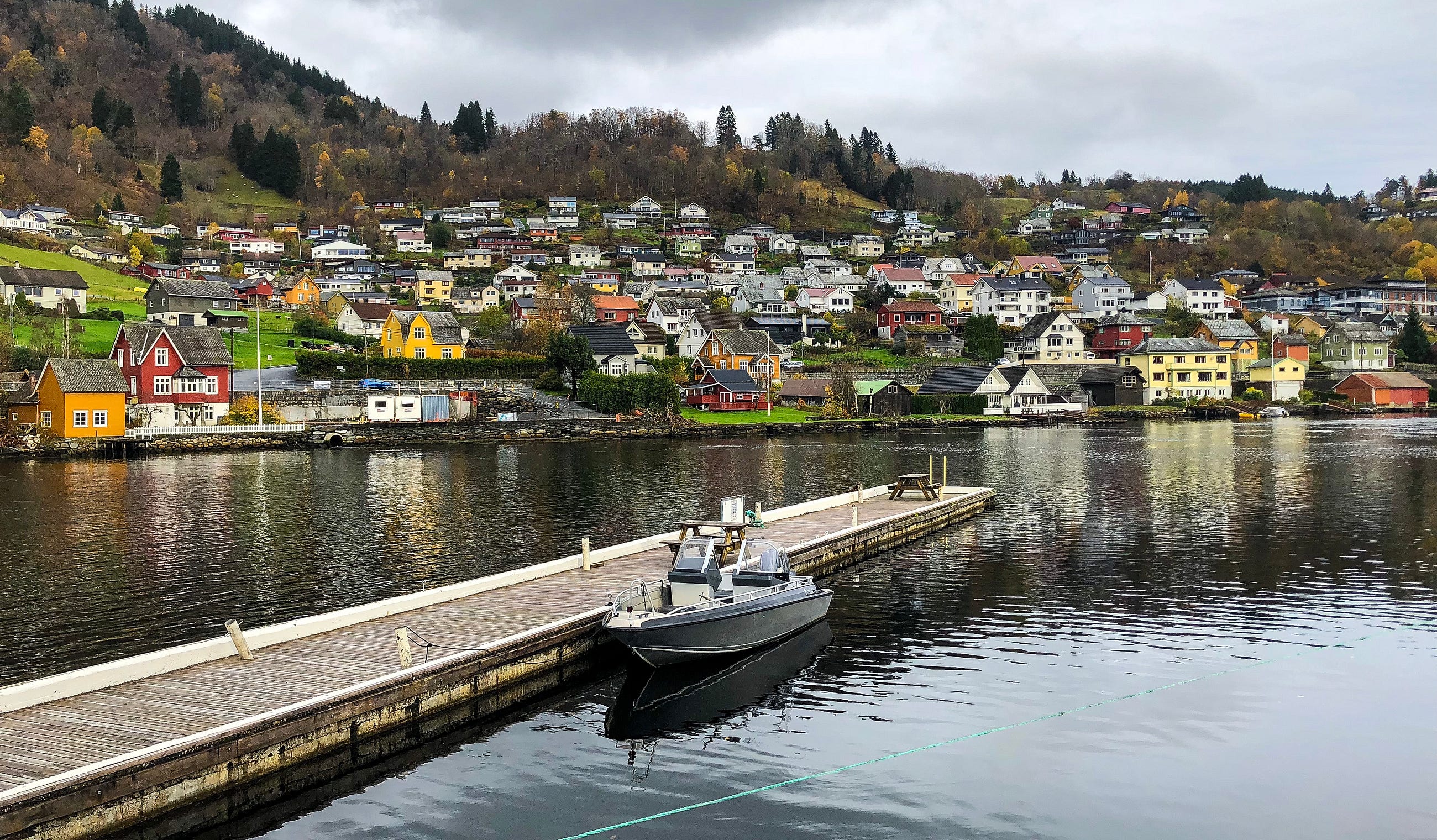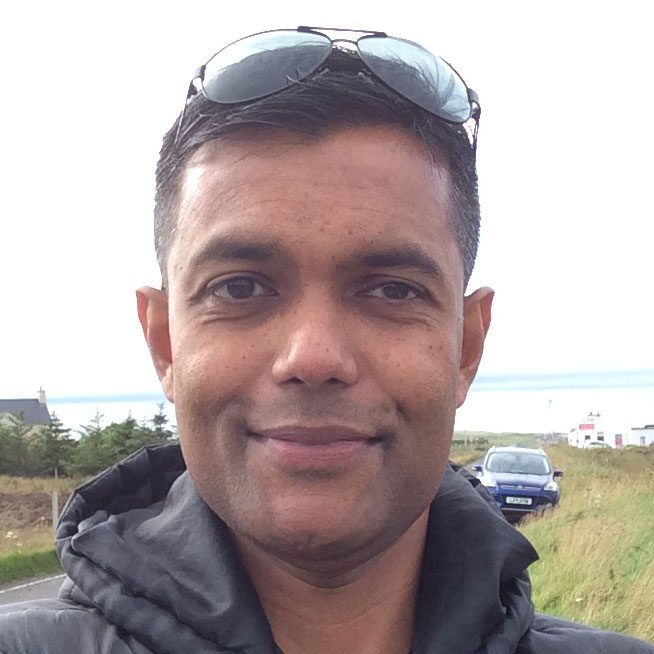A guy I know well at work has been selling Norway to me for years. Our conversations often go like this.
“Norway is one of the most beautiful places on earth,” he would begin. “You will love it!”
“I come from God’s Own Country,” I would say. “I am not easily impressed.”
“You don’t have fjords in Karela. Norway has 1,190 fjords.”
“We have backwaters. Does Norway have backwaters?”
That would unsettle him a bit, but not for long.
“Do you know how many robberies were reported in Norway last year? 788! We have very few crimes. It is hard to get mugged even in Oslo!”
“We don’t try to get mugged in India. But you do realise we probably solve more robberies every day than Norway reports in a year, right?”
“Norway has excellent public transport.”
“India has auto-rickshaws.”
We would go on in this vein for some time — him dragging in reindeer, elk and polar bear, me fighting them off with mongoose, cobra, and elephant — till he says with a sigh, “You do know Norway is beautiful, don’t you?”
“I know.”
“You should go have a look.”
“I will.”
Last week I found myself with some free time. So I drove to Gatwick and caught a flight to Oslo. It was time to take measure of the Norwegians.
I thought of taking an Uber from Oslo airport to the city, but remembered just in time that I could not remortgage my house again.
So I took an NSB train to Oslo S, then caught a No 31 that deposited me close to where I was staying in Frederik Stangs gate. The whole journey cost NOK 140 (£14 or INR 1,300). An Uber, just for the 2.5-mile ride from Oslo S, would have deprived me of NOK 300 (£28 or INR 2,678).
Oslo is one of the most welcoming cities you could visit, but it also has the remarkable capacity to make most visitors feel shabby. According to the Worldwide Cost of Living 2018 report, it is the fifth most expensive city in the world — after Singapore, Paris, Zurich, and Hong Kong — so you don’t get to do many things you would in other places.
House rent is 33.32 per cent higher than in London, 52.24 per cent than in New York, and 82.79 per cent than in New Delhi. You pay £4.20 for a coffee. A meal for two costs upward of £120, without wine (but with plenty of candles, mind). Taxi tariff begins at £8.38. So even for locals, jumping into taxis and eating out frequently involve first having a serious conversation with their accountants.
Oslo’s 673,469 residents are of course equipped with better salaries to deal with such inconveniences. On average, they earn NOK 29,237 or £2,750 per month after taxes, a significant portion of which, from what I could observe, they invest in looking after themselves. Osloites, especially women, dress well. Even the dog-walkers I met looked elegant, in well-cut coats and stylish scarves, like Pernille Holmboe after a fun night out. They exercise more, consume fewer sugary drinks, and have better health habits.
Residents of Oslo receive the largest share of bank loans in the country, have the highest levels of education, and have a falling national crime rate to contend with. In other words, they have much to be happy about and it would appear they are: the 2017 World Happiness Report has it that Norway is the happiest country in the world, having swiftly risen four places to dislodge Denmark (“Oh, don’t be sad!”).
All this, I didn’t know when I walked from the bus stop to the Airbnb lodging I had booked. But I could see my friend at work had a point about crime in Norway when I collected the key. My host had left it for me in a flower pot on the main street, right next to a busy cafe.

Next morning I walked to Frognerparken to enjoy some renowned public nudity. Frognerparken is the Central Park of Oslo and the nudity I was excited about is in the form of 212 statues sculpted by a most-prolific Norwegian named Adolf Gustav Vigeland.
The largest public park in Oslo, Frognerparken is 80 acres of gentle slopes and flats. It began life as a private garden in the 18th century and remained so till 1896 when the City of Oslo bought it to build on, thought better of that idea, and opened it to the public for recreation and sports.
The park’s main attraction is the works of Gustav Vigeland. Vigeland is known for modelling the Nobel Peace Prize medal, but that pales in comparison with what he has done at Frognerparken — the Vigeland Installation comprises 212 figures, made of bronze, granite and wrought iron, all in their birthday suits, all doing astonishing things. It is the largest sculpture park by a single artist anywhere in the world. Better still, you don’t have to pay to see it.
A white bus with red lettering across its belly was disgorging a stream of well-dressed elderly tourists by the main entrance when I arrived. I hastened in through a side gate. Inside, autumn was in full bloom.
Vigeland’s masterpieces are set out in a straight line from the main entrance, across a bridge, on an 850-metre stretch. I had expected the area to be crowded. The Vigelandian nudes attract some 1.75 million oglers like myself from all over the world annually, but there were only orderly tour groups, a couple of runners, and three mothers pushing prams on the main boulevard, and I made my way to the bridge, bumping shoulders with no one.

Fifty-eight of Vigeland’s bronze sculptures line the bridge, well-endowed men, women and children, in real and surreal poses. All looked athletic, some positively acrobatic. A few male figures were interacting with youngsters in ways that could bring Save the Children screaming.
One figure with a vaguely Voldemortian face had two babies tucked under his arms and appeared to be contemplating what would happen if he dropped them. In another, a hunky man held up a girl, in my opinion positioning her advantageously to deliver the perfect smack.
There was also the famous ‘Flying Babies’ statue. The depiction, apparently, is of a man fighting off four flying babies, but from what I could see, it could well have been ‘Angry Man Kicking And Hitting Babies For No Reason’. Or ‘Father Of Four Loses His Marbles On A Trying Day’.
Exhausting the pleasures of the bridge, and making a mental note of the anatomical exactitudes that Vigeland has captured in terms of men’s private parts, I ambled over to the Fountain. This is the oldest of Vigeland’s works, featuring a huge bronze basin held aloft by a group of Olympic-quality bodybuilders. Around it stands a series of figures, humans intertwined with trees. I quickly consulted Internet and came away with the education that it was all about the “eternal circle of life” under “the crown of trees“.
I would have spend more time around the Fountain, but was driven away by a particularly ferocious family — one middle-aged daughter and two elderly parents — who took turns to photograph themselves in every imaginable pose in front of every statue I tried to study. After a brief battle, I accepted defeat and made my way to the Monolith Plateau.
This is the grand centre of the Vigeland Installation. And at its centre stands the Monolith, a sculpture from a single piece of granite, 46 feet tall, with 121 figures carved into it. After Vigeland modelled it in 1924, three master carvers took 14 years to finish the Monolith, which has men, women and children swirling up it.
Vigeland continues the circle of life theme here as well, and the Monolith is interpreted by some as depicting people “drawn to heaven” — not just “sadness and controlled despair”, but also “delight and hope”.
Craning my neck, I tried to discern delight and hope. In the pyramid of bodies, in the tangle of limbs and torsos entwined in what looked like a climb over one another to reach for the sky, was there delight and hope? Or was Vigeland capturing humanity’s capacity for selfishness and one-upmanship — yes, its spirit for survival?
I looked at it for a long time. It really was extraordinary.
I pottered around the Monolith for some time, looking at the other creations displayed there. I took in the Swarm of Babies, Heap Of Dead Bodies, Boys Teasing Imbecile, Old Woman Resting Against Old Man, and Mother And Son, paying particular attention to (what I will call) Two Young Women Doing Yoga, Norwegian Style.
There was more to see in the park, but I had spent the morning with tourists peering up at anatomical exceptions. I felt a sudden urge to rub shoulders with ordinary Osloite, preferably clothed and non-acrobatic, so headed to the city centre.

The Oslo Harbour Promenade stretches nine kilometres, tying together some interesting cultural and historical sites. I had planned a stroll along the waterfront, biting into a reindeer burger and wiping melted Brunost mixed with ketchup off my chin, but, alas, that was not to be.
No one was roasting reindeer when I got to the harbour. You could not even get an elk hotdog. There were restaurants where you could sell your kidney and buy a starter, but all they had in the way of outdoor catering were Thai and Tacos. It sucked the romance out of my walk.
As I stood there in indecision, a ferry was docking. On a whim I bought a ticket. Oslo has 40 islands within its city limits, many of them connected to the mainland by a stream of ferries. For NOK 105, you could get on one of the ferries the locals used and go ‘island-hopping’ for 24 hours.
There was 45 minutes to kill before the next ferry. So I had a look at the tacos stand. I was hoping to order something exotically Norwegian, but after a sustained interrogation of the chef-cum-waitress, I had to settle for chicken. Seriously, how difficult is to mince a bit of reindeer?
But the tacos were excellent. It was not a dish you could sell in Mexico without risking jail sentence, but there was no denying it was delicious. Actually, this is not surprising. Norwegians do not know it yet, but their children quietly switched their national dish to tacos a few years ago. Now everyone is crazy about it. In fact, some 400,000 Norwegians reportedly eat tacos every single Friday, which is ’fredagstaco’, ‘taco day’. The girl behind behind the counter even managed a Norwegian signature on my tacos by adding pickled cabbage. Who would have thought that would work?
I enjoyed the tacos so much that I ordered another and had to run for the ferry, jumping on board with a Tarzan leap at the last minute. Like everything else in Norway, the lower deck was spacious and uncrowded. I made my way to the open upper deck, sat down next to a rail with Viking life jackets, and watched the Akershus Castle and Fortress fall behind.
The next hour could not have been more perfect. Every 10 minutes or so, there would be an announcement — “Hovedoya”, “Bliejoya”, “Gressholmen“ — and the ferry would ease into a small jetty. A few passengers would get off, a few on, and we would back out carefully and make our way to another green landmass specked with a few houses. There were a few kayakers on the water, which looked black in the fading Nordic light.
I could have sat there for a lifetime if they had given me some blankets.
When I land in a new city, it is customary for me to jump into a rental car and exit the airport at the head of a growing queue while I orient myself with right-hand traffic and local speed limits. I have done this all over Europe with great success, and I saw no reason to alter the tradition when I got to Bergen.
I had actually arrived by rail from Oslo after a six-hour journey — a journey so spellbinding that it glued me to a succession of windows, slack-jawed and weak-kneed, watching woods, valleys, fjords, waterfalls, snow, and tunnels fly by — into pouring rain the previous afternoon.
Bergen is Norway’s second-largest city. It is cute, with handsome houses perched on hillsides, a colourful site of clapboard buildings in Bryggen, a 300-year-old fish market, an awesome range of cafes, and great street art. But on a rain-soaked Saturday, options were limited and I spent a miserable evening getting soaked by rain.
I caught the light rail to the Flesland Airport next day — passing through intriguingly named stations such as Florida, Hop, and Paradis — to pick up the rental car that awaited me there, and thus was it that I found myself leading a prosperous procession towards Voss. My plan was to drive around a bit in Hordaland county, see some waterfalls, take in some fjords, stop at little places — in short, enjoy a bit of Norwegian ‘countryside’ — and I had 36 hours to accomplish that.

What can I say? Hordaland is stunning even in the lousiest weather (and the weather is lousy pretty much all the time). I took the scenic route from Bergen, travelling on a narrow, winding road with plenty of fjord views. There were long bridges across stretches of gleaming black water. Clouds hung heavy on the road. You could see snow on the mountains, hiking trails disappearing into valleys.
I drove for miles without seeing traffic, frequently disappearing into long tunnels, only to burst into light and an eye-popping view. Outside of Moria in the Lord of the Rings, Norway is probably the most tunnelled place: it has some 900 road tunnels, including the world’s longest, the 24.5-km Laerdalstunnelen.
I took in Hardangerfjord, drove to Steinsdalsfossen to walk behind one of the most picturesque waterfalls I have ever seen, and had a peaceful wander around Norheimsund. I had a splendid dinner in Voss — elk and new potatoes, if you must know, which the excellent staff at Park Hotel cooked specially for me — and stayed with a couple with authentic Viking names, Torhild and Stig.
Everyone spoke perfect English everywhere I went, though occasionally people addressed me in Norwegian, owing to my blue eyes and blonde good-looks, no doubt. If truth be told, communication was a lot easier than in non-English-speaking nations such as Libya, Mongolia and Manchester.
On my way back, I took the E16, the direct route to Bergen. It was raining heavily, but there was no water-logging on the roads. Traffic flowed smoothly. When you have the kind of weather you have in Norway, I guess you learn a thing or two about building roads.
I stopped at Dalekvam around noon, and briefly at Stanghelle. Stanghelle was stunning even in the rain, and I stood on its bridge, looking into the fjord where it curved and disappeared into the mountains. You could almost believe you were in Rivendell.
But I did not explore further. I had seen too much Nordic beauty in too short a time. I needed a respite — a stretch of concrete jungle, some snarled traffic, vehicle fumes. I needed to get back to Gatwick.
A version of this also appeared on the Economic Times.

Previous Next